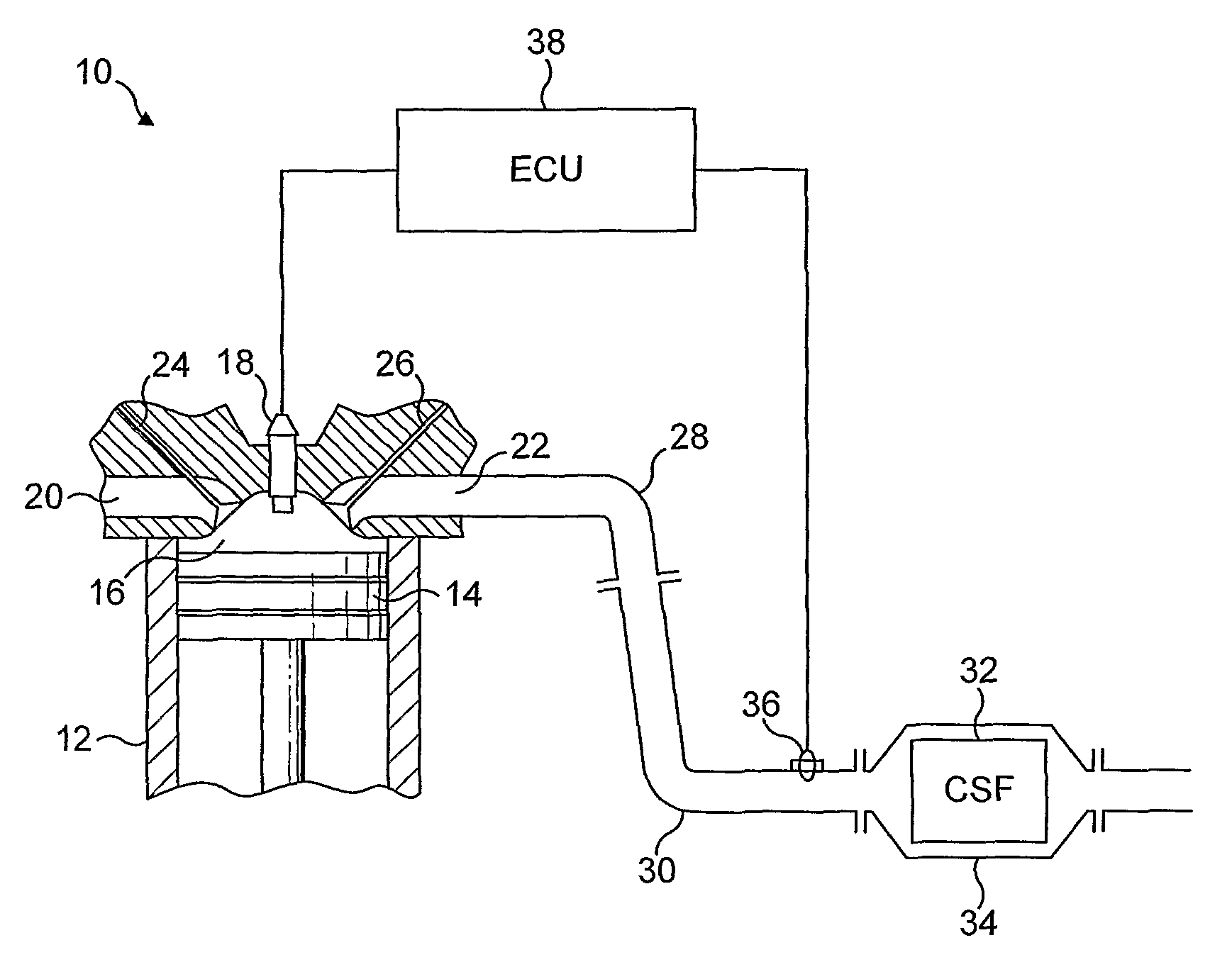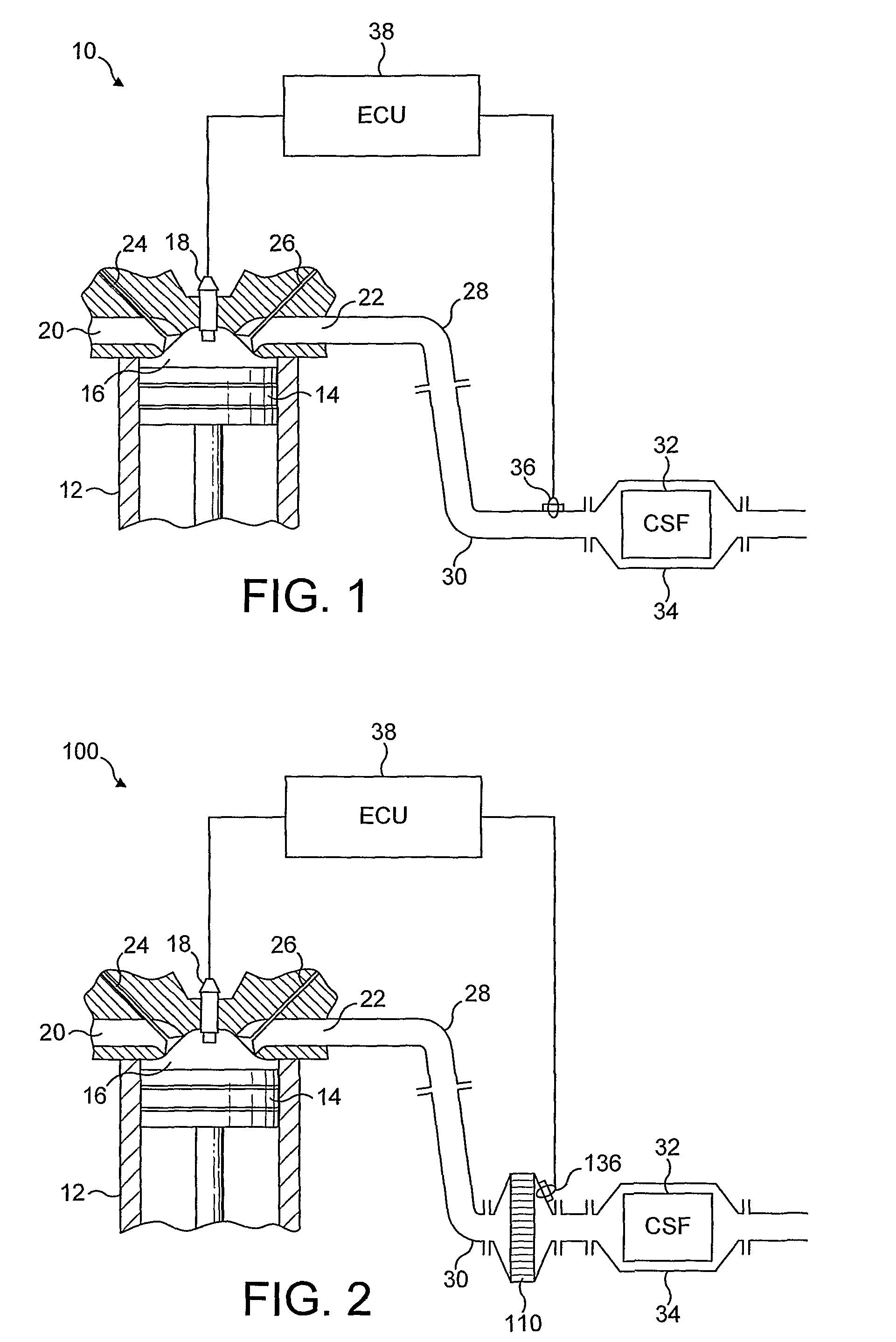Exhaust system comprising catalysed soot filter
a technology of catalytic soot and exhaust system, which is applied in the direction of machine/engine, electrical control, exhaust treatment, etc., can solve the problems of unfavorable direct measurement of inlet gas conditions. , to achieve the effect of increasing the temperature of the cs
- Summary
- Abstract
- Description
- Claims
- Application Information
AI Technical Summary
Benefits of technology
Problems solved by technology
Method used
Image
Examples
first embodiment
[0022]In a further embodiment, the catalysed sensor means comprises the catalysed thermocouple junction of the first embodiment and additionally an uncatalysed reference thermocouple junction. Such a sensor is described in U.S. Pat. No. 4,029,472, the entire contents of which is incorporated herein by reference. This arrangement of two thermocouple junctions provides the advantage that the sensor is able to determine the heat derived from combustion of HC and / or CO on the CSF as well as the pre-CSF exhaust gas temperature so that additional feedback control can be provided to the control unit.
[0023]The catalyst in the CSF typically comprises at least one platinum group metal (PGM), but in particular embodiments it comprises Pt either alone or in combination with one or more additional PGM, such as both Pt and Pd or both Pt and Rh or all three of Pt, Pd and Rh including suitable promoters such as Mg, Ba or rare earth metals such as Ce. The material from which filter substrate monolit...
second embodiment
[0041]Referring to FIG. 2, reference numeral 100 refers to a second embodiment according to the invention, wherein like components from FIG. 1 carry the same reference numeral. In FIG. 2, 110 is a short e.g. 2 inch (5 cm) long 5.6 inch (14.2 cm) diameter substrate monolith (or “slice”) e.g. of 400 cpsi ((cells per square inch) 62 cells cm−2) coated with an oxidation catalyst of e.g. Pt / Alumina. Sensor 136 comprises a catalysed thermocouple junction located immediately behind “slice”110, which sensor communicating with ECU 38.
[0042]In use, some HC and / or CO are combusted on the oxidation catalyst 110 and the exotherm generated in the exhaust gas is detected using sensor 136 in addition to the sensor detecting exotherm generated by combusting HC and / or CO on the catalysed sensor itself. A correlation can be made between the detected temperature increase in the exhaust gas and an expected temperature increase in the CSF.
PUM
 Login to View More
Login to View More Abstract
Description
Claims
Application Information
 Login to View More
Login to View More - R&D
- Intellectual Property
- Life Sciences
- Materials
- Tech Scout
- Unparalleled Data Quality
- Higher Quality Content
- 60% Fewer Hallucinations
Browse by: Latest US Patents, China's latest patents, Technical Efficacy Thesaurus, Application Domain, Technology Topic, Popular Technical Reports.
© 2025 PatSnap. All rights reserved.Legal|Privacy policy|Modern Slavery Act Transparency Statement|Sitemap|About US| Contact US: help@patsnap.com


